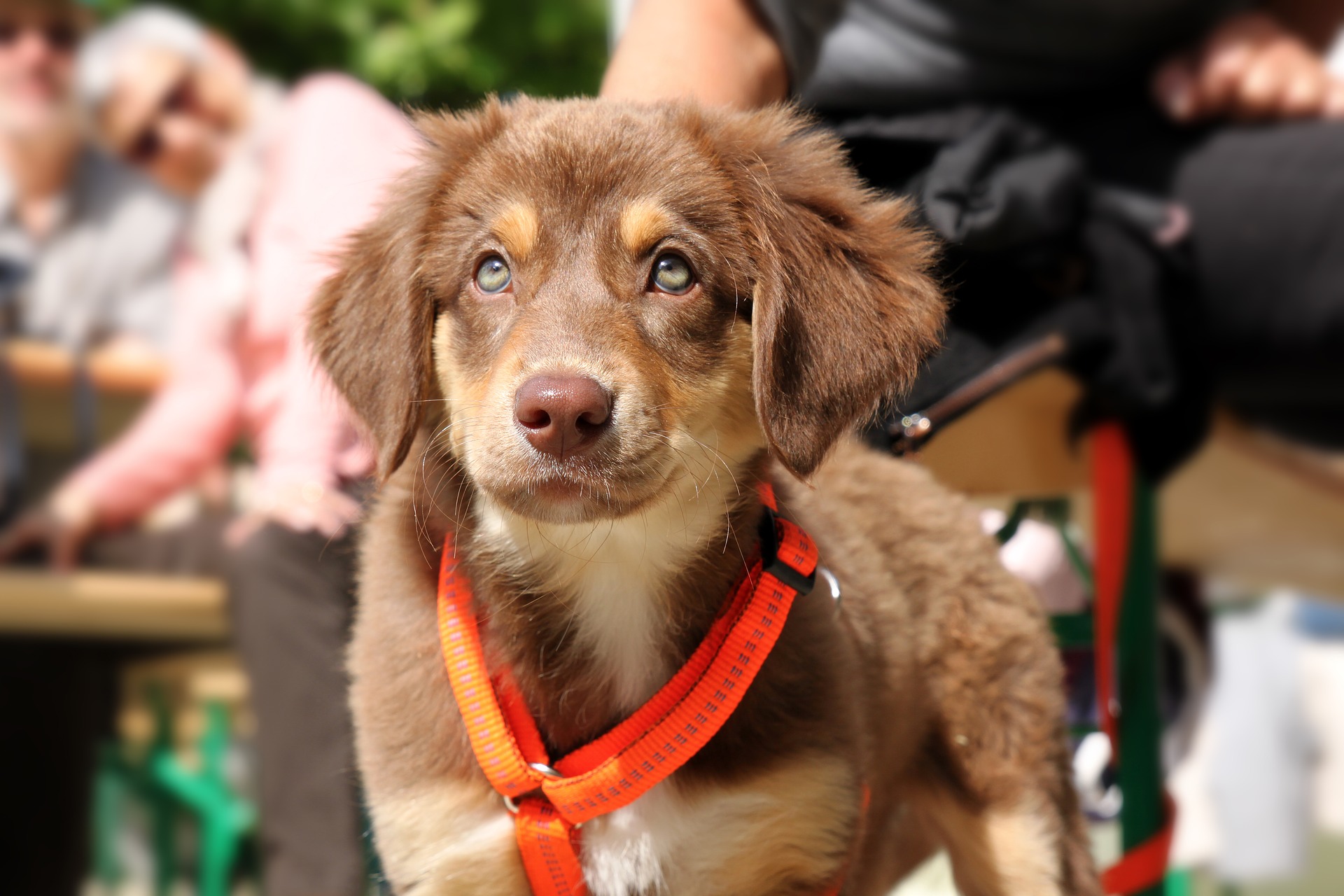Collars, Leashes and Harnesses Within Grasp
Pet Age Staff //February 5, 2020//
BY JAMIE POPPER
There is perhaps no greater annoyance to dog owners than a dog that pulls on the leash. Retailers educated in various no-pull solutions and fitting suggestions are better able to help their customers while minimizing returns and exchanges. There are dozens of no-pull solutions available on the market. Understanding how they work will allow retailers to make better suggestions for dog and handler teams.
Head halters look like a horse halter. These tools provide the most leverage over the dog; however, many dogs find them annoying or aversive. When considering this tool, be sure to do a slow introduction. Front attachment harnesses can be broken into two categories: restrictive and non-restrictive.
Restrictive harnesses have horizontal straps that cut across the shoulder. These harnesses often have martingale loops that tighten when the dogs pull. These harnesses work by blocking the dog’s forward movement and shortening their stride. The martingale loop applies additional pressure to the dog when they pull as a correction.
Non-restrictive harnesses have a Y-shaped front and allow full freedom of movement in the forelimb. These harnesses curb pulling by gently guiding the dog around back toward the handler. The handler can then re-engage the dog and reward them for walking nicely. This option is best for long-term use.
Be sure to recommend a treat pouch and some high-value soft training treats. Training a dog to walk nicely on a loose leash takes patience and consistency. Unlike training a dog sit or down, where we are simply labeling a behavior the dog does naturally, training loose-leash walking is a foreign concept to most dogs. We have arbitrary criteria, such as walk at the same pace as me, turn when I turn, and don’t go too far in front of me. No dog and owner will achieve their loose leash walking goal without spending dedicated time training their dog their expectations for a walk. A helpful tip I share with my students is to manage their dog closely the first few walks with new equipment. If we teach the dog that with new equipment comes new expectations, the dog can pick up on the skill much faster. If we simply allow the dog to continue with old habits while wearing the new equipment, the behavior will not change.
With all the above-mentioned tools, proper fit is critical. Ensuring a proper fit helps eliminate chafing, reduces the risk of the dog escaping the harness and limits chewing of the harness due to an uncomfortable fit.
If high-touch customer service is your thing, consider offering a fitting service for your customers. Discussing the best no-pull tool and fitting it to your canine customer allows you to build a strong relationship with your customer. Allowing customers to try out new equipment in the store will give them a good understanding of how it will work when walking their dog in distracting environments. Offering this can also decrease returns and exchanges and minimize disgruntled customers when their dog chews through the harness. Be sure to discuss with the customer that chewing happens in a blink of an eye, so it’s important to remove harnesses after walks or when the pet isn’t supervised.
If you do bring on this service, consider designating a small section of your store to be a fitting corner. Setting aside a dedicated space in a lower traffic part of your store can help minimize distractions while the pup is being fitted. Some dogs are shy with humans and aren’t fond of the handling it takes when fitting a harness. Consider having a small, elevated table to place the dog on to boost their confidence and provide a defined space of the dog to stay on for the fitting process. High-value single ingredient treats like beef liver is sure to win over their hearts. Reinforce the dog for calm behaviors during the fitting process.
This service can be by appointment only, allowing you to staff the day appropriately while also creating a demand for this exclusive service. Most harness fittings can be accomplished in 20 minutes or less.
Be sure to have other training products nearby to make recommendations for your customers. Specialty leashes, treat pouches, training treats and even dog-training clickers can be easy upsell items for a motivated customer.
Author bio: With a formal education in canine conditioning and strength training, Jamie Popper has been working within the pet training industry since 2011. She is a registered therapy dog evaluator and has collaborated with the Orlando Health therapy dog program on curriculum and program development. Since 2015, Jamie has dedicated herself full-time to Blue-9 Pet Products, where she is involved with the development and overall growth of the company.



















